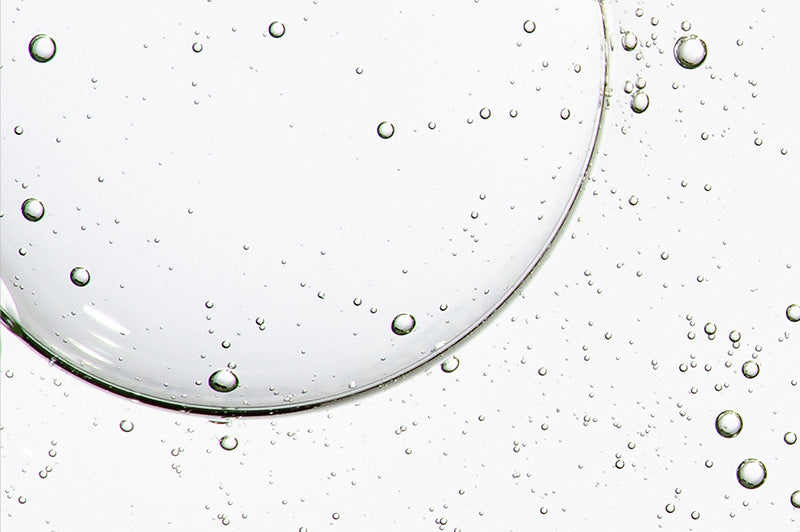How does toothpaste work?
Let's talk about toothpaste. We all use it as part of our daily personal care, and for the most part, it does a great job of keeping our teeth clean and healthy. But when you consider that toothpaste is a product we all put in our mouths each and every day, have you ever wondered what it's actually made from and how it works?
Toothpaste: Covering the basics
A good toothpaste needs to cover a few basics in order to perform well for you and your mouth. It needs to be effective at plaque and food debris removal, effectively remove surface stains and leave your teeth feeling smooth, clean and fresh.
Another crucial function of a good toothpaste is to neutralise acidity in the mouth, a by-product caused by the breakdown of food particles by microorganisms. If these acids are not regularly removed by careful brushing with a good toothpaste they can damage the tooth enamel, resulting in painful cavities and tooth decay. These acids and bacteria can also lead to gum disease, preventable scenarios which can contribute to eventual tooth loss.
So how can you ensure you are using a good toothpaste and find out if your brushing method and routine is truly working for you and your family? First things first, check the ingredients.

What's in your toothpaste?
Ingredients often vary on the type of toothpaste, so it's worth familiarising yourself with a few key ingredients so you can avoid any unnecessary chemicals or nasties when it comes to making the right choice of toothpaste.
Fluoride
Perhaps the most important ingredient in toothpaste is fluoride, a naturally occurring mineral which has been through vigorous clinical trials and found to strengthen tooth enamel making it more resistant to decay.
The amount of fluoride contained in your usual toothpaste can be found on the packaging and is measured in parts per million (ppm). According to the NHS, toothpastes containing between 1,350 and 1,500 ppm of fluoride are the most effective at protecting enamel and preventing tooth decay in adults. For children, recommended levels of fluoride in toothpaste vary according to age, so check with your dentist. Polished London UltraWhite whitening toothpaste contains 1,450 ppm of fluoride.
After brushing with fluoride toothpastes, some residue should remain on the teeth offering some protection until the next time you brush, which is why rinsing after brushing is not necessary. For added protection, many dentists recommend rinsing with a sodium fluoride containing mouthwash.
Some dental hygiene experts recommend rinsing with mouthwash at a separate time from brushing so as not to remove the protective layer of fluoride left behind by your toothpaste.
Abrasives
It may sound harsh, but a mild abrasive agent is required to remove tiny food particles and the residue left behind from sugary and sticky foods and drinks, preventing the build up of harmful plaque on the teeth to prevent cavities. Our Ultra White toothpaste contains a non-toxic mild abrasive - sodium bicarbonate - which gently but effectively cleans the teeth, removing plaque and stains while also whitening.
Palm Oil
Many toothpaste brands contain Palm Oil, a frequently used cheaply-produced ingredient in many cosmetic products and countless hygiene and household products. The vast scale of production has resulted in the decimation of large areas of tropical rainforest and an irreplaceable loss of habitat for wildlife and many endangered species, a huge loss for our planet.
Some Palm Oil is now more ethically produced under the watchful eye of the World Wildlife Fund (WWF), who work to promote sustainable Palm Oil production, many are unfortunately not. At Polished London we try our best to source ingredients which are produced and manufactured in alignment with our environmental ethos, so we work hard to select ingredients that do not contain Palm Oil. We are also proud to be certified as a PeTa-approved vegan and cruelty-free brand so you can rest assured you can achieve the brightest smile without any unnecessary cost to our planet.
Sodium Lauryl Sulfate
Another non-essential ingredient in most toothpastes is Sodium Lauryl Sulfate (SLS), which is an inexpensive surfactant or foaming agent. A known irritant, SLS detergents may cause unnecessary drying and irritation of the skin and tissues in some people.
Polished London toothpaste does not contain Palm Oil or Sodium Lauryl Sulfate.
Flavouring agents
The majority of toothpaste brands use mint flavouring agents to leave the mouth and breath fresh, but the strong flavour of mint is also commonly used to mask the taste of other less palatable ingredients. Our UltraWhite whitening toothpaste is flavoured with natural oils derived from wild mint and peppermint leaves.

What's the best way to brush your teeth?
If dental experts unanimously agreed on anything, it'll likely be that twice daily tooth brushing is the best way to remove plaque to maintain oral health and is the first line of defence in the prevention of dental decay. But what way is the best way to brush?
It may seem like simple common sense, but when was the last time you brushed consciously and really thought about cleaning each area of your mouth as effectively as possible?
While everybody has their own slightly different method of brushing, it's always advisable to ask your own dentist for the best advice specific to you and your teeth, however, there are a few general guidelines that are appropriate for most people:
Brush your teeth using a circular motion
Most dental experts recommend brushing with a circular motion, paying particular attention to a small number of teeth at a time, and gradually working your way around your entire mouth. Using a back and forth sweeping action to brush the teeth can result in damaged gums, causing sensitivity, bleeding and potentially room for bacteria to get below the gum line, so avoid this if possible.
Pay attention to all tooth surfaces
Take care to brush the outside of each tooth, followed by the insides of the individual teeth and finally the chewing surfaces, for a total of two full minutes twice a day. Many dentists also recommend gently brushing the tongue to remove bacteria which can cause bad breath.
Don't forget your toothbrush!
According to dentistry experts, size matters! Your toothbrush head should be small enough to fit in your mouth comfortably, so one size does not fit all. This is particularly important for infants and young children. Make sure to buy an age appropriate brush for your growing children, supervise brushing and replace brushes regularly.
Bristles should be relatively soft and rounded at the tip, a brush that is too firm may cause damage to your enamel and gums so choose carefully. Natural bristles, such as those on our Bamboo Toothbrush, allow you to clean those hard-to-reach crevices between the teeth without harming the gums or enamel.
Manual or electric toothbrush?
A good quality electric toothbrush that cleans the teeth using a high-speed oscillating motion can remove plaque and food stains more effectively and clean areas that a traditional brush simply cannot reach.
For a truly advanced clean, our Sonic XP Toothbrush cleans using a two-pronged approach, firstly by way of a scrubbing action and secondly using powerful sonic - or sound - vibrations. This advanced vibration method is truly effective and works to loosen tiny particles of food debris from the teeth and entire mouth with minimal effort, they are then gently flushed from the teeth and below the gum line via fluid dynamics and the creation of millions of miniscule bubbles, leaving you with a ‘dentist clean' feeling mouth every day. What's not to love?
How often should I brush my teeth?
According to the Oral Health Foundation (OHF), brushing your teeth twice a day with a good quality fluoride toothpaste not only helps to remove plaque, prevent tooth decay and gum disease but can also prevent bad breath from developing.
Some people find a timer helpful to make sure it's a full two minutes, since even our best estimates can vary! An additional clean may also be a good idea after eating or drinking anything particularly sugary or sticky to remove any residue and surface stains before any issues arise. Replacing your toothbrush and/or toothbrush head every two to three months is also advisable.
For parents, the OHF recommends beginning a healthy brushing routine as soon as the first milk teeth appear, usually around 5 to 6 months old. Brushing should always be supervised until a child reaches the age of 7, to ensure that the brushing method is effective.
A good oral hygiene routine is an essential part of maintaining overall health and well-being, alongside a healthy diet and regular check ups with your dentist.

Where can I learn more about oral health?
The Oral Health Foundation is an independent charity which focuses on the promotion of good dental health primarily via its website and a dedicated dental advice helpline for patients. Check the A-Z of Oral Health from the Oral Health Foundation.
Blog posts

Hero Ingredients at Polished London
Why whitening results come from formulation first. At Polished London, we believe effective teeth whitening starts with the formulation not gimmicks. Every ingredient in our oral care products is c...
Read more
Red & Blue Light Therapy: What It Really Does for Your Smile
Red and blue LED light technology is often misunderstood in teeth whitening. Here's what they actually do and why real whitening results come from formulation first.
Read more
Everything You Need to Know About Teeth Whitening Gel
Your smile is one of the first things people notice, and it deserves the very best care. When it comes to whitening your teeth, not all gels are created equal. The truth is, most whitening gels rel...
Read more


